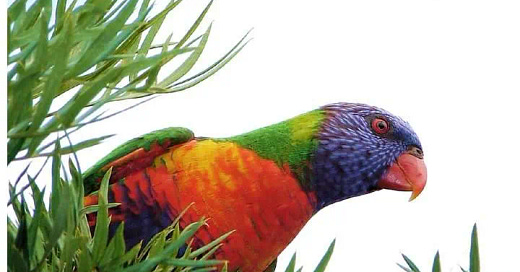Wild adult rainbow lorikeet, Trichoglossus moluccanus, shows off its psittacofulvin pigments. (Credit: Louise Docker / CC-BY 2.0)
With rare exceptions, parrots are colorful — many of them, brilliantly so. Although most birds with so-called “warm” plumage colors, like cardinals and goldfinches, for example, get their bright red, orange and yellow colors from pigments in their diet, parrots are different: they biochemically synthesize their color molecules, which are known as psittacofulvins. But when psittacofulvins are extracted from feathers and analyzed by curious scientists, they appear orange in solution. So where do parrots’ reds come from? According to a new study by a team of scientists in New Zealand, parrots combine the chemistry and physics of psittacofulvins to create a range of brilliant hues.
Keep reading with a 7-day free trial
Subscribe to Words About Birds to keep reading this post and get 7 days of free access to the full post archives.




